2. Kit de iniciación a los medios digitales
3. Kit para ina Internet segura
6. Recursos web de seguridad en Internet
As students move through a lesson, some acquire information and skills more quickly than others. Some students will need additional support, scaffolds, feedback, or reteaching to understand key concepts and apply specific strategies, processes, or skills. We must collect formative assessment data in each lesson to understand our students’ progress and respond to their needs.
Formative assessment is a process of gathering information about students’ understanding and their progress toward firm standards-aligned learning goals. Formative assessment helps teachers gauge how effective their instruction has been at helping students learn concepts and apply skills. The goals of formative assessment include:
Unlike summative assessment, which typically occurs at the end of a learning cycle to evaluate students’ overall progress toward the unit’s desired results, formative assessment is ongoing and designed to inform instruction, indicate areas where additional differentiation is needed, and guide learning.
Formative assessment should also serve as a tool for students to develop a heightened awareness of their strengths, limitations, and growth. When teachers share formative assessment data with students, it becomes a powerful tool for goal setting, progress monitoring, and reflection. In our book, The Shift to Student-led, Dr. Novak and I dedicate a chapter to reimagining formative assessment as simply a teacher tool and share a collection of strategies designed to transform formative assessment into a metacognitive tool for learners!
There are different categories of formative assessment, including observational assessments, checks for understanding, and formative feedback. Let’s explore examples in each category of formative assessment.
The teacher’s observations of student behaviors, interactions, and work provide valuable qualitative data (or information that is descriptive and non-numeric) that complements quantitative assessments, like quizzes that produce numerical data. Techniques such as anecdotal records, checklists, and rating scales allow educators to gain insights into students’ progress, engagement, and learning strategies.
1. Observations with a Checklist: Simply observing our students at work can provide valuable insights into their behaviors, interactions, and level of understanding during classroom activities. This approach is particularly beneficial for capturing qualitative data that complements quantitative assessments and helps us make informed instructional decisions.
Teachers can use observations with a checklist when students are:
Teachers might include the following items on a checklist:
2. Observation Paired with a Simple Rubric: Assessing students’ performance or behavior using a simple standards-aligned, mastery-based rubric during classroom activities provides a clear strategy for teachers to provide students with transparent and clear feedback on their areas of strength and those needing improvement.
For example, suppose small groups of students are discussing a text they’ve read, a video they watched, or a podcast they listened to. In that case, the teacher can move around the room observing students and circling language on the rubric to informally assess their participation in the discussion or their understanding of the content. At the end of the discussion, the teacher can distribute the rubrics and ask students to review their assessment and reflect on what they learned.

This category is essential for assessing students’ comprehension, identifying misconceptions, and measuring progress toward learning objectives. Quick checks like quizzes, exit tickets, and questioning techniques provide valuable insights into students’ understanding.
1. Tell Me How: Instead of relying solely on written explanations to assess what students know or can do, video requires that students communicate verbally. For some students, this is easier; however, it may be more challenging for others. It’s important to mix it up so that students who struggle to communicate their ideas verbally have opportunities to practice when the stakes are low. Conversely, it gives students who excel at verbally articulating their thoughts the chance to surface their learning that way.
Ask students to record a video:
2. Create An Analogy: Ask students to make a comparison or create an analogy. An analogy or comparison challenges students to think about the quality or characteristic of a concept, phenomenon, object, etc. to explain how it is similar to something else.
3. Error Analysis: Generate a series of problems or a work sample containing errors. Ask students to find the mistakes, correct them, and explain (in writing or verbally in a video recording) how they knew the errors were present and how they went about fixing them.
4. 3-2-1 Activity: Ask students to complete the following prompts. What are three things they learned?
What two questions do they have? What is one thing they would like more help with or are confused about?
Providing timely, specific, and actionable feedback is critical for guiding students’ learning and helping them improve. Formative feedback helps students understand their strengths, areas for improvement, and how to progress toward learning goals effectively.
1. Real-time Feedback in a Teacher-led Station: Teachers using the station rotation model should dedicate their teacher-led station to real-time feedback sessions whenever students are working on a process (e.g., formal writing assignment, performance task, project). That way, they can pull the feedback loop into the classroom, making it focused, timely, and actionable.
2. Structured Peer Feedback: Incorporate peer feedback activities where students review and provide feedback on each other’s work. Use structured protocols or rubrics to guide the peer feedback process and ensure constructive and meaningful feedback.

3. Feedback Conferences: Schedule one-on-one or small group conferences with students to discuss their progress, review their work, and provide personalized feedback. Use this time to address specific questions, clarify concepts, and set goals for improvement. Teachers using the playlist model can build “teacher check-ins” into their playlists to ensure students pause their progress and meet with the teachers to receive feedback on their work.
4. AI Feedback Paired with Reflection: Teaching students to use an AI chatbot, like Co-pilot or ChatGPT, to receive feedback on their work provides them with a 24/7 feedback source. However, for this strategy to yield valuable formative assessment data for the teacher and students, teachers need to work with students to develop prompts they can use to elicit quality feedback from an AI tool.
Teachers should pair AI feedback sessions with a reflection tool to help students capture what they learned from AI and reflect on what that feedback tells them about their areas of strength and areas in need of improvement or development.
In the virtual coaching video below, I highlight the value of using formative assessment data to track students’ progress and respond to students’ needs.
Harnessing the power of formative assessment is about more than just gathering data. It’s about fostering a dynamic, student-centered approach to learning that provides teachers and students with the data needed to understand their progress, needs, and growth. Integrating formative assessment strategies seamlessly into your teaching practices allows teachers to monitor progress and facilitate more personalized learning experiences that foster continuous improvement.
Formative assessment serves as a cornerstone for creating a responsive, inclusive, and engaging classroom environment. It provides educators with invaluable insights into students’ understanding, learning trajectories, and areas for growth. This real-time feedback loop allows teachers to tailor instruction, offer targeted support, and guide students toward meaningful progress.
The folks on my email list get everything mentioned in my blog as well as other weekly email exclusives! I love designing resources to save teachers time and help them be more effective, but I don’t have the space to feature them all in my blogs. Join my email list, and you’ll receive copies of the formative assessment rubric, peer feedback choice board, AI feedback and reflect form, and more!
The post Formative Assessment is Key to Being Responsive appeared first on Dr. Catlin Tucker.
A teacher recently asked me whether students always need to attend every station in a rotation. The short answer is “no.” Our classrooms are composed of diverse groups of students with different skills, abilities, preferences, language proficiencies, and academic needs. Given that variability, it makes sense that not all students would need to spend time engaged in the same learning tasks or activities. So, teachers who love the station rotation model may want to experiment with a fun variation of the traditional design of a rotation.
This twist on the station rotation model combines the strategic collection and use of data with student agency to create a more personalized and student-centered approach to this blended learning model. In a traditional station rotation, all students rotate through the same sequence of learning activities or stations.
By contrast, the must-do versus may-do variation of a station rotation requires that teachers use data to identify student needs and design a rotation in which specific students are required to attend one or two “must-do” stations. In addition to these “must-do” stations, students can select a certain number of “may-do” stations to spend time at based on their preferences and interests.
For example, a teacher might design a station rotation with six stations. However, students will only have time to attend four of the six stations in the rotation. So, the teacher will use data to assign each student one or two “must-do” learning activities. These are the stations they must attend in the rotation. Once students have attended their “must-do” stations, they can decide which other “may-do” stations are appealing because they align with the student’s interests and preferences or target a concept or skill they want to spend time on.
As educators, we always look for ways to enhance our students’ learning experiences, making them more engaging and effective. With its blend of mandatory and elective stations, the modified station rotation model offers a powerful tool for personalized learning. But when is it most beneficial to implement this variation?
Differentiated Learning Needs: In a class with diverse skill levels, a teacher uses assessment data to identify critical areas where individual students need extra support. Must-do stations are tailored for skill reinforcement, while may-do stations offer extension activities, review games, and metacognitive skill-building activities.
Interest-Based Learning: In a unit of study, a teacher sets up must-do stations addressing core curriculum requirements and may-do stations that invite students to delve into subtopics related to the subject, allowing students to choose based on their interests and passions.
Preparation for an Assessment: To prepare for upcoming tests or assessments, must-do stations provide practice and support in areas where data shows students struggle. In contrast, may-do stations offer practice in areas where students feel they can benefit from additional practice and review.
Math Skills Reinforcement: For math classes, must-do stations could focus on foundational math skills that need reinforcement, as identified by assessment data, while may-do stations could offer problem-solving activities, collaborative real-world math challenges, or math games that stimulate critical thinking and application.
Language Acquisition: In language classes, must-do stations target specific speaking, grammar, vocabulary, and writing skills that need improvement, while may-do stations provide opportunities for conversational practice, engagement with media to improve comprehension skills, or cultural exploration.
Project-Based Learning (PBL): In a PBL environment, must-do stations could be essential steps in the project process, such as research or prototype development, while may-do stations offer optional skills workshops or resources for deepening project work, like using organizational project management tools or conducting interviews.
The effectiveness of this approach to the station rotation model hinges on accurately identifying the “must-do” stations for each student. This process begins with collecting and analyzing data to pinpoint individual learning needs and strengths.
Formative Assessment Data: Regular formative assessments can provide immediate feedback on student understanding and mastery of specific skills. These formative assessments can take the form of quizzes, short written responses, exit tickets, online discussions, and graphic organizers.
Summative Assessment Data: When students complete a summative assessment, that data often reveals that the class is in different places in terms of their concept knowledge and skill set. Instead of moving on to the next unit of study, teachers can pause and design a must-do versus may-do station rotation to address specific areas of need that surfaced from the summative assessment data. This gives the teacher time to address gaps or misconceptions before starting a new unit.
Once teachers have used data to identify specific areas of need, they can assign each student one or two “must-do” stations.
Logistically, teachers can use a few strategies to communicate with students about which stations are “must-do” during a rotation.
Digital or Printed Learning Plans: Provide students with digital or printed learning plans that detail their must-do stations for a station rotation lesson. These can include checkboxes or spaces for stamps/stickers to mark completion, helping students track their progress.
Color-Coded Systems: Use color-coded cards or folders to signify different stations. Each student receives cards or folders indicating their must-do stations at the beginning of class.
Personalized Station Maps: Give each student a “map” of the classroom with their must-do stations highlighted or marked. This map can be paired with a personal itinerary or schedule outlining the times or order for visiting each station.
My favorite strategy is to give students a blank personalized learning plan, like the one pictured below, and pass out color-coded cards that signify specific stations. This allows teachers to quickly communicate the “must-do” stations to students and reuse those blank colored cards for future may-do versus must-do station rotations.
Teachers can quickly distribute the cards to individual students during the welcome activity or warm-up. When they receive the colored cards, students can fill in their “must-do” on their individual learning plans. This reduces the time teachers spend preparing for this lesson and encourages students to participate actively in the planning process.

The “must-do” versus “may-do” approach to station rotation blends structured, data-driven tasks with flexible, interest-based activities, balancing needs-based learning activities with student agency. The “must-do” stations ensure that essential skills and knowledge gaps are addressed, while the “may-do” stations invite students to explore their interests and passions, promoting higher levels of engagement and motivation.
Implementing this model requires thoughtful planning and a deep understanding of each student’s needs and preferences. Whether leveraging high-tech platforms for seamless communication and tracking or utilizing low-tech methods for organizing and managing stations, the focus remains on creating a student-centered learning environment. Ultimately, this approach enhances academic outcomes and empowers students to take ownership of their learning journey.
As educators, our mission is to prepare students for success in an ever-changing world. By adopting the “must-do” versus “may-do” station rotation model, we tailor the educational experience to fit the unique needs of each learner, ensuring that every student has the opportunity to thrive and excel.
The post The Station Rotation Model: Must-Do vs. May-Do Stations appeared first on Dr. Catlin Tucker.
Choice boards are a fantastic tool for honoring learner variability and providing students with meaningful choices. Not every student enjoys the same task, so giving them options is critical to maximizing their motivation and focus in a lesson. Choice boards allow us to honor our students’ preferences, needs, and interests, making their learning experience more engaging and effective.
By integrating choice boards, we put students in the driver’s seat, allowing them to control the pace and path of their learning experience. Simultaneously, choice boards free teachers to focus their time and attention on working with individual students or small-group instruction, providing more personalized support or challenge. This can lead to better learning outcomes for everyone.
Choice boards are not simply a collection of fun activities; they can be designed to serve several purposes. Below are some of my favorite choice board designs.
In this blog, I want to focus on designing a standards-aligned choice board with AI. So, let’s first discuss how they are structured!
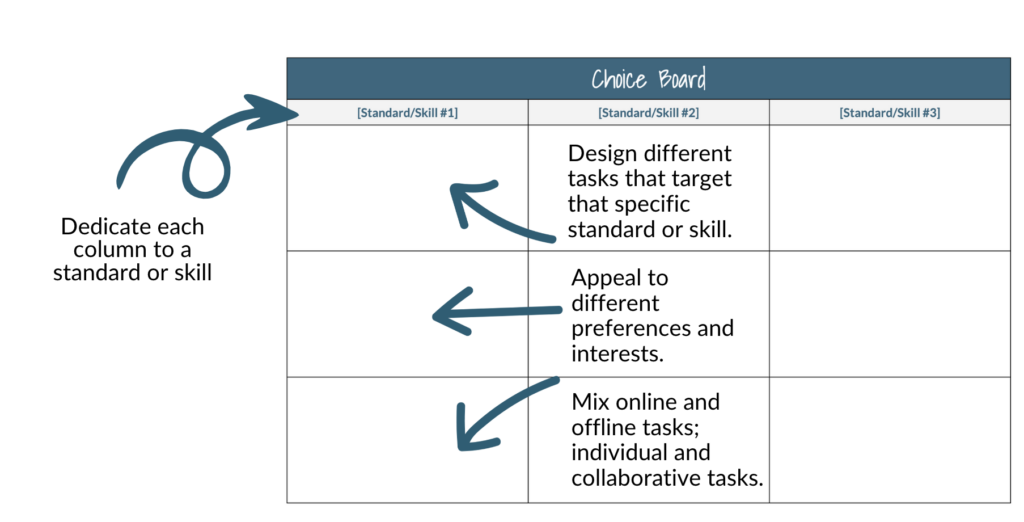
Step 1: Identify The Standards – Decide on the three standards or skills you want to focus on in your choice board. These should be concepts, skills, or processes that students have already been exposed to. The goal of this work is to reinforce and strengthen their understanding of key concepts and ability to apply specific skills.
Step 2: Design the Learning Activities – In each column, design three distinct activities or tasks that enable students to interact with the standard from various perspectives. Ensure these activities cater to diverse learning preferences, interests, and strengths by incorporating a range of engagement strategies. Strive to include different modalities—such as visual, auditory, and kinesthetic. Provide both online and offline options as well as individual and collaborative tasks since some students enjoy working independently and others enjoy working with peers.
Step 3: Teacher Focus – Decide how you will use this time as students self-pace through the choice board. Teachers may want to pull individual students or small groups for personalized or differentiated instruction and support. Teachers can also use this time to give students feedback on a piece of work in progress or even facilitate side-by-side assessments to ensure transparency in the grading process.
AI chatbots, like ChatGPT or Co-pilot, or AI-powered education tools, like MagicSchool.ai, can significantly reduce the time and effort required to design standards-aligned choice boards. AI tools can analyze curriculum standards and learning objectives to suggest activities and tasks that are tailored to specific educational goals. They can also generate content that caters to different learning preferences, ensuring a diverse range of options for students.
When using AI, the quality of your input or the instructions you provide will dictate the quality of your output. If you want to use AI effectively as a thought partner, you need to be specific about what you want it to help you develop.
Below is an example of a prompt I put into ChatGPT to help me generate ideas for a standards-aligned choice board for a third-grade math class, focusing on the standard strand 3.0A, “Operations and Algebraic Thinking.”

ChatGPT offered a collection of ideas for each column, but I still needed to guide AI in refining the options with the following prompts:
Below is the choice board I created with the help of ChatGPT. Unlike my work designing standards-aligned choice boards before AI, this took a fraction of the time but allowed me to design with a high level of intentionality.

While students are absorbed in their choice board tasks, teachers can strategically pull individuals or small groups for targeted instruction and personalized support. The key is to use this time for interventions that can significantly impact student understanding and skill development. Teachers can provide additional modeling, specific feedback, guided practice, or introduce new strategies that scaffold learning effectively. This personalized attention helps bridge learning gaps, reinforce concepts, and build confidence among students.
Ultimately, integrating choice boards into the classroom is a win-win situation for students and teachers. Students gain the freedom and responsibility to direct their learning paths, while teachers can effectively guide and nurture each student’s academic growth.
Check out my other blog posts on choice boards!
Check out my advanced blended learning course!
The post Designing a Standards-aligned Choice Board (with AI) appeared first on Dr. Catlin Tucker.
Let’s start with a quick review of the playlist, or individual rotation, model for those who have not heard of it. A playlist is a sequence of learning activities designed to move students toward a desired result. Most playlists culminate in a performance task or artifact that demonstrates students’ ability to transfer or apply what they learned working through the playlist.
I’ve trained many teachers who use choice boards and ask, “What’s the difference between a choice board and a playlist?” I wrote a blog about the difference, but here is a quick comparison that might help. A playlist functions like a Spotify music playlist that you cannot shuffle. You listen to a sequence of songs in a particular order. In contrast, a choice board is like ordering off a menu at a restaurant. You select specific items for your appetizer, main dish, and dessert, but there are many things on the menu that you do not eat.
Students acquire and process information at varying rates, naturally leading to a need for different amounts of time to complete academic tasks effectively. Despite this reality, most learning is teacher-paced, not student-paced. The focus is on the teacher covering content and moving students through lessons on a strict timeline. It begs the question, What is the value of racing through material if students don’t understand or retain it?
In a setting where the pace is dictated by the teacher or the curriculum rather than the learner’s needs, students may rush through the material without fully understanding it. The overall quality of students’ work also suffers when they do not have the time and space to fully engage with academic tasks or produce artifacts to express and communicate their learning.

So, teachers who want to leverage the playlist model to give students more control over their learning pace must identify tasks that take students dramatically different amounts of time to compete. Below is a list of academic assignments that benefit from variable time on task.
Any of these learning activities or tasks above would benefit from students controlling the pace of their progress and could benefit from the playlist model. I’ve built project playlists, close-reading playlists, and writing playlists. I’ve even constructed entire units of study in a playlist to allow students to move through it at a pace that works for them. To read more about supporting self-paced learning and keeping students on track, check out my blog titled “The Art of Self-Pacing: How to Build Playlists that Keep Students on Track.”
The playlist model allows teachers to delegate the delivery of basic information to videos and other multimedia resources, freeing them to concentrate on personalized and differentiated instruction. As a result, teachers can use their class time more effectively, working directly with individual students or small groups who need additional instruction, support, or scaffolding. This also teaches students to hone their self-directed learning skills as they own more of the responsibility for their learning.

As students work through the playlist, teachers can gather formative assessment data to identify those who might benefit most from one-on-one attention. This process ensures that teachers can provide targeted assistance, address specific needs, and ensure that all students are making progress toward the desired result.
Teachers can use this one-on-one or small group time for various tasks.
In these focused sessions, teachers can assess and monitor each student’s progress through the playlist, making real-time adjustments or additions to their learning path. This flexible approach helps to ensure that all students get what they need to be successful.
The playlist model can significantly improve classroom management by addressing the root causes of unproductive behaviors, which often stem from a misalignment between the pace at which a lesson or learning experience is moving and the pace at which students need it to move. When the pace of the class is too fast, students can become overwhelmed, leading to frustration. They may feel like their needs as a learner are not important, which can cause resentment and feelings of apathy. If the pace is too slow, students might become bored and disengage. The playlist model can mitigate or eliminate many of these unproductive behaviors by allowing students to progress through the material at their own pace.
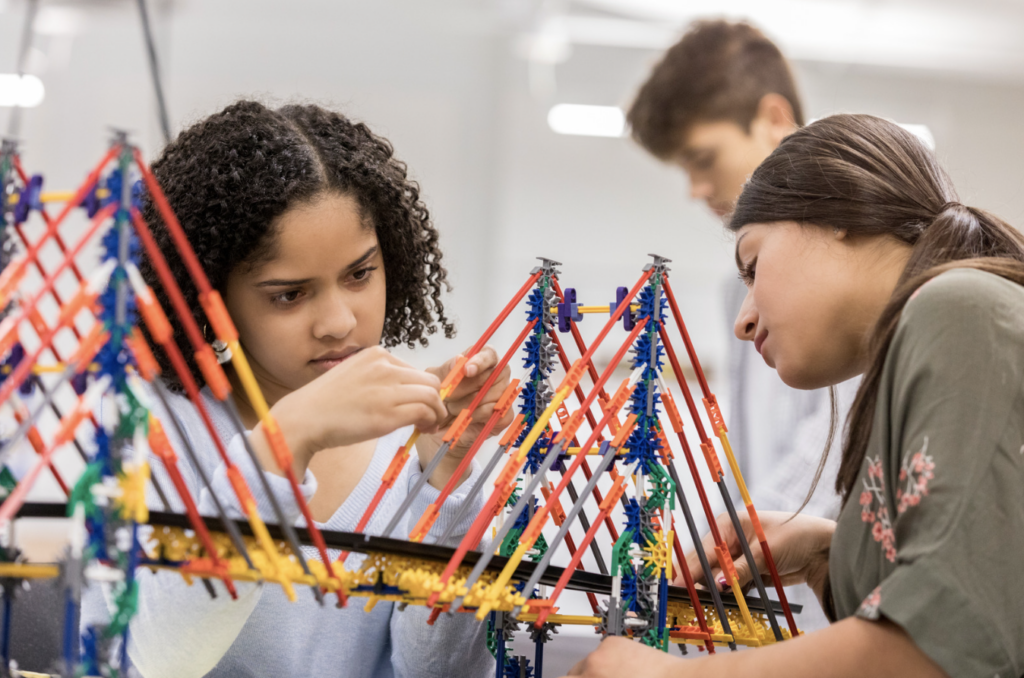
Many classroom behavior issues arise from students feeling left behind or unchallenged. With a self-paced learning model, students are more likely to be absorbed in tasks that match their skill level, reducing disruptive or off-task behavior.
By allowing students to work at their own pace, the playlist model keeps them continuously engaged in tasks that are neither too challenging nor too easy. This sustained engagement helps maintain their interest and motivation in the learning process. Engaged students working on tasks at the right level of difficulty are more likely to understand and retain information, leading to improved academic performance.
Setting the Stage for Successful Classroom Management When Using the Playlist Model.
Teachers who take the time to set the stage for work on a playlist will find that students are more successful at directing their learning as they move through the playlist.
The playlist model is an effective instructional model that gives students more control over the pace and path of their learning while ensuring they have access to personalized instruction and support. As a result, this model can reduce frustration, keep students engaged, and minimize unproductive behavior.
Ultimately, the playlist model creates a more inclusive and engaging learning environment. It encourages students to take control of their learning, boosting their confidence and motivation. At the same time, it enables teachers to embrace their role as facilitators of learning, guiding students through a learning path that best suits their individual needs.
The Art of Self-Pacing: How to Build Playlists that Keep Students on Track
Playlists vs. Choice Boards: What is the difference?
Blended Learning: Building a Playlist
Playlists: A Path to Personalizing Learning
 Continue Your Professional Learning Journey!
Continue Your Professional Learning Journey!The post 3 Reasons Teachers Should Use the Playlist Model appeared first on Dr. Catlin Tucker.

Written by Noelle Gutierrez
Educators know the importance of academic vocabulary instruction. Student knowledge of academic words and phrases has a direct impact on their ability to acquire and comprehend information, which is why it should be a part of every subject area and class.
As an instructional coach and administrator, I regularly observed teachers providing direct instruction using explicit vocabulary routines. Such routines include students saying the word aloud, clapping out syllables, looking up and writing down the definition, and finding examples and non-examples of vocabulary terms. Although routines like this are beneficial for learners, teachers would often tell me that they were looking for more creative strategies for deepening students’ understanding of and ability to use academic vocabulary.
One of my favorite strategies for vocabulary development is having students construct a vocabulary haiku. The directions for creating a vocabulary haiku are simple.
Here is an online example of a vocabulary haiku for the word analyze.

Here is an offline example of a haiku for the word analyze.
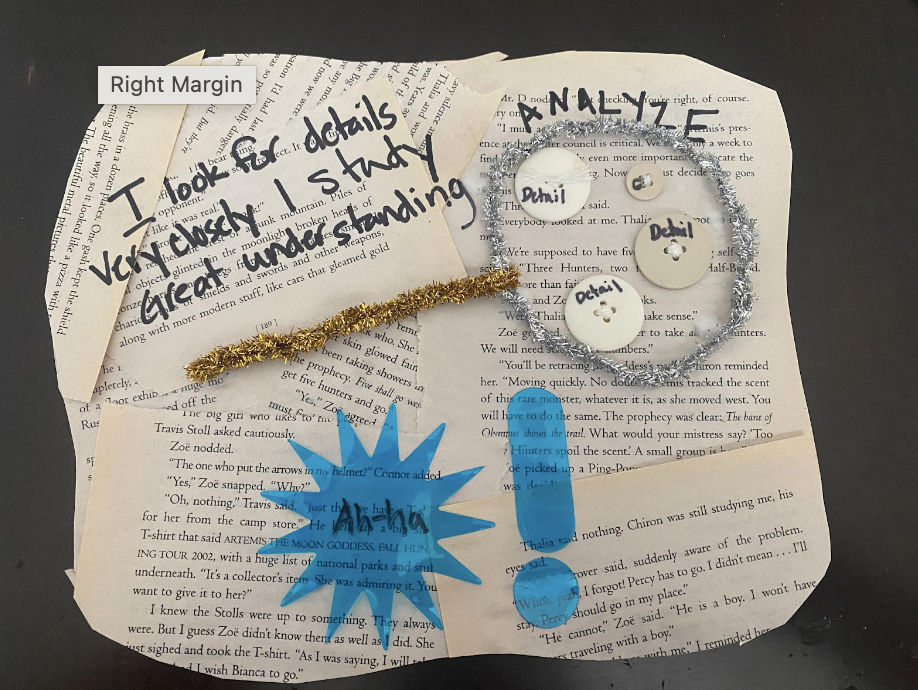
Although this strategy could be done independently or collaboratively, online or offline, I preferred having students work offline with a partner as a maker space activity during a station rotation lesson.
During a station in a rotation, partners selected 1-2 vocabulary words from a list. These were usually key terms and phrases related to the unit that they were explicitly introduced to during previous lessons. Partners then collaborated to create the vocabulary haiku.
In addition to the actual writing, they collaborated to incorporate visual representations of the term as related to the language in the haiku. Because I used this strategy as part of a maker space station, I provided items such as construction paper, markers, colored pencils, tissue paper, stencils, balsa wood, yarn, glue, pipe cleaners, and more. This gave students a variety of resources and materials to use, but the activity could also be completed with markers and construction paper.
At first, many of my students were hesitant about this activity because it wasn’t as simple as writing down a definition or using the word in a sentence. They were resistant because it required them to think critically, communicate, collaborate, and be creative. However, this strategy quickly became one of my students’ favorite ways to demonstrate their knowledge of the academic terms they were learning. The artistic haikus were so impressive, I often hung their creations around the room or on my word wall.
Here is an example of the offline station directions I provided to students.
In addition to being an engaging activity, this strategy was a great way for me to assess my students’ understanding of the academic vocabulary informally. This was critical because they needed to know these terms to access the questions and texts on their end-of-unit assessment. If I noticed a haiku reflected a partial or incorrect understanding of a term or phrase, I pulled students for individual or small group instruction to review the term prior to the assessment, ensuring they had a firm grasp of the vocabulary.
If you plan to have students work on this at a station in a rotation, it’s important to first onboard students to this strategy at a teacher-led station or as a whole group activity. This allows you to model the process and guide their initial efforts, helping those who are struggling to understand the expectations for this task. Once they understand what a haiku is, how to write one, and have had practice with a couple of vocabulary terms, you can gradually release this into a small group station.
You can also use a “would you rather” strategy to give students a meaningful choice for this assignment.
Keep in mind that if you give students a choice to do this online, it won’t take as much time as it would offline as part of a maker space station. Giving students a choice, even a choice of what words to select, will make this activity more engaging for them.
Word Sneak: Vocabulary Game Inspired by the Tonight Show
Vocabulary Lessons: Flipped, Collaborative & Student-Centered
Pile of Words: Drive Deeper Engagement with Vocabulary at the Beginning of a Unit, Text, or Project
The post Vocabulary Haiku: A Creative Approach to Deepening Understanding of Academic Vocabulary appeared first on Dr. Catlin Tucker.
Se presenta el análisis de la información que se logró recopilar a partir del diagnóstico que se realizó sobre la gestión administrativa, docente y curricular que se realizó desde la actividad académica de Aseguramiento de la calidad de la carrera impartida por la Escuela de Bibliotecología, Documentación e Información de la Universidad nacional; cuyos resultados permitieron, posteriormente, hacer el análisis, diseño e implementación de un sistema de información que se utiliza en la EBDI como apoyo para la sistematización, procesamiento e integración de datos que ayudan a la planificación y las acciones de mejora continua de la carrera.
1. Padlet
2. Mural
3. Lino
4. Miro
5. Flinga
6. Stormboard
7. Jamboard
8. Wakelet
Consejos básicos:
* 7 reglas para aprender a motivar en casa.
* Los 10 derechos del lector de Daniel Pennac.
* Vídeo "10 ideas para crear pequeños grandes lectores".
Vídeos y películas motivadoras:
* 6 cortos para fomentar la lectura.
* 10 cortos y películas para despertar el amor por la lectura.
Bibliotecas virtuales:
* Leoteca.
* Leonardo - Blog infantil biblioteca pública de León.
* eBiblio.
Recursos online:
* 20 libros infantiles gratuitos.
* Weeblebooks.
* Convierte cuentos, poesías o historias en bellos textos animados.
* Gloria Fuertes, la poeta de los niños.
* Storybird - Cuentos interactivos ilustrados.
Actividades interactivas:
* 7 actividades interactivas para el área de Lengua.
* Libros educativos con realidad aumentada.
Aplicaciones:
Espacios lectores:
* 5 ideas para crear un acogedor rincón de lectura para niños.
* Inspiración para crear rincones de lectura infantil.
Material motivador descargable:
* Juegos de la Oca para aprender a leer.
Revistas:
* Leoleo.
* Namaka.
* Babar.
Propuesta de libros por edades:
* 14 libros prácticos para que nuestros hijos o alumnos disfruten leyendo y escribiendo.
* Los mejores cómics para niños.
Juegos de mesa:
* Los mejores juegos educativos para niños y adultos.
* 7 juegos de mesa educativos para clase y para casa.
Comparto con vosotros cinco experiencias prácticas que he realizado con mi alumnado para trabajar diferentes contenidos y para desarrollar varias competencias.
He llevado a cabo este proyecto con mis alumnos de 5º de Educación Primaria. Podéis ver en qué consiste y cómo lo hemos realizado de dos maneras:
1. Hilo de Twitter @Manu___Velasco
¡Espero que os guste la idea!
Para acceder a las actividades, haced clic en cada una de las imágenes.
1. Mi estrella:
Dibujamos una estrella en la pizarra, escribimos nuestro nombre dentro y en las puntas datos que nos identifiquen. Los estudiantes tienen que tratar de averiguar qué significa cada dato formulando preguntas de sí o no (¿tu color favorito es el azul?, ¿te gusta el chocolate?…). Cuando descubran todo, les repartimos unas estrellas para que escriban su nombre y datos sobre ellos. Después con su compañero tienen que hacer la misma dinámica que antes con el profesor, pero por turnos (primero pregunta uno y después el otro). Se puede hacer más divertido incorporando una información falsa en la estrella que la otra persona deberá adivinar.
Más información y fuente: ProfedeELLE.
2. 2 verdades y una mentira:
3. Cápsula del tiempo:
A oficina esgotou. A sala encheu-se de gente animada e faladora de várias gerações e motivações. Comecei por fazer uma visita guiada à exposição, falando um pouco sobre a génese deste ciclo de trabalho, mas deixando bastante espaço para a inevitável e fascinante interpretação individual dos presentes. As crianças colaram o nariz ao vidro da vitrina que contém algumas pedras e objetos encontrados à beira do Mar, “no meio do caminho”. Comigo tinha uma pedra inventada (cascalho e nylon) que passou de mão em mão enquanto ia falando sobre o tempo da geologia e o aparecimento de novos materiais que a natureza tenta integrar dolorosamente. Sobretudo, deixei que cada um vivesse a exposição à sua maneira.
Depois começou a oficina. Um grupo divertido de alunos de Arte do secundário ocupou uma mesa mais afastada onde foram surgindo desenhos, que começaram pelo tema da pedra e terminaram com vigorosas personagens desenhadas a lápis de cor. As famílias encheram a sala de risadas e a experimentação foi descontraída; os adultos também se fartaram de criar .Uma senhora mais velha que queria aprender mais sobre desenho ficou ao lado de um Pai e uma filha que, serenamente, utilizaram o carvão, usando os dedos e as “borrachas miolo de pão”. Ainda dei uma mãozinha a uma senhora que estava com a filha ( desenhavam bem!); absorveram as minhas sugestões, fazendo surgir desenhos muito bem concebidos. Gosto do ambiente destas oficinas!
A exposição encerra no Sábado, dia 6 de Abril.
No dia 15 de Março, pelas 18horas, inauguro mais uma exposição de desenho do ciclo “Tinha uma pedra” na galeria da Biblioteca Municipal de Torres Vedras. O espaço escolhido é pequeno, intimista, obrigando a uma seleção de trabalhos de pequena dimensão. Será um momento cheio de significado, como se estivesse a expor em casa dos amigos; a minha relação com a Biblioteca Municipal vem de longe, sempre em projetos desafiantes que me têm obrigado a refletir sobre o modo de mediar pela arte, pela literacia e de forma inclusiva. Ainda por cima, o meu novo ateliê e nosso espaço da Laredo Associação Cultural fica em Torres Vedras (sobre esta notícia escreverei depois). Imaginam como estou contente e grato ao Município por esta oportunidade de consolidar a sementeira.
Como sempre, no decorrer das minhas exposições, terá lugar uma oficina de desenho que parte do tema da pedra encontrada para 2 horas de experimentação de diversas técnicas de desenho. Acontecerá no Sábado 23 de Março na Biblioteca Municipal de Torres Vedras e carece de inscrição prévia. Uma oficina aberta a todos a partir dos 8 anos, a pensar, também nos adultos (pais, namorados, seniores, estudantes...) que gostam de desenhar. Levarei os materiais que usei para criar os desenhos da exposição, para que todos possam experimentar
Sobre este conjunto de desenhos executados em 2022/2023
Não existe um modelo, as imagens chegam diretamente do inconsciente, de mão dada com as intenções, essas mais estruturadas, criando uma malha de sustentação para o corpo da obra. Talvez estas pedras tenham adquirido vida própria ao longo do processo que as gerou; às vezes surge uma metáfora e deixo fluir sobre a folha de papel. O desenho continua a ser uma metodologia pessoal para entendimento e explicação do Mundo. O desenho é concreto, preciso, mesmo quando é necessário traçar o indizível. A pintura estrutura-se na teia conceptual do desenho, ganha segurança e rumo de pesquisa. No meu trabalho, o desenho e a pintura sempre conviveram complementando-se, cruzando-se, cada um sabendo bem o seu lugar. O desenho e a escrita, embora de natureza distinta, têm propriedades comuns, juntando-se na reflexão e no plano, numa compatibilidade tão antiga como a própria história do homem.
Mas o desenho tem uma existência autónoma, um dialeto que se expressa de um modo distinto. Neste conjunto de obras, a introdução da ponta seca, a par do lápis, traz uma dimensão táctil às imagens. Os diversos riscadores são numerados de acordo com a sua dureza e tom com que se expressam, distinguindo-se no traço. Assim, temos uma vasta família: 3H HB, 2B, 3B, 8B. Só para citar alguns. E o 0? Pergunto-me. Como é o zero? É o nada? E se o zero for o sulco invisível deixado pela ponta seca? Um lugar onde não é depositada nenhuma matéria deixando que o papel (o suporte) fale. E há tantos desenhos feitos com estes riscadores zero, sobre rochas, metal ou areia ... Perco-me nas diferentes possibilidades geradas por este labor silencioso... A pedra foi o objeto eleito para esta pesquisa, o pretexto para que o lápis vá falando sobre o papel,. É certo que traz a geologia e o universo consigo, mas projeta muito mais, irmanando o público. A atmosfera é o que sinto, vejam como respiro.
Miguel Horta, Verão de 2023
MC Maylon, ex-affair de Anderson Leonardo, vocalista do grupo Molejo, recebeu com profunda tristeza a notícia do falecimento do artista nesta sexta-feira, dia 26. Em uma conversa com o EXTRA, ela expressou sua devastação: “Estou arrasada, em luto”.
Os dois mantiveram um relacionamento em 2022, e Maylon, uma mulher trans, carrega uma tatuagem com o rosto de Anderson em seu braço. “Estou muito triste. Lembro muito dos momentos bons que a gente passou. A tatuagem do rosto dele vai ficar eterna no meu braço”, acrescentou.
Anderson havia anunciado anteriormente o envolvimento com MC Maylon, mas o relacionamento deles acabou em desavenças, tornando-se objeto de investigação policial. Maylon acusou o cantor de tê-lo submetido a uma relação íntima não consentida, uma alegação negada por Anderson quando o caso veio à tona.

Na época, o vocalista do Molejo declarou que a relação se deu de forma consensual e revelou sua bissexualidade. Posteriormente, o cantor recorreu à Justiça para que Maylon cessasse as menções a ele nas redes sociais. Por sua vez, Maylon anunciou nas mídias sociais que lançará um livro narrando sua vivência com Anderson.
O cantor Anderson Leonardo, do grupo Molejo, faleceu nesta sexta-feira (26), no Rio de Janeiro, após uma atualização em seu estado de saúde. O artista, de 51 anos, estava internado na UTI do Hospital Unimed, na Barra da Tijuca, Zona Oeste do Rio.
“Nosso guerreiro ANDERSON LEONARDO lutou bravamente, mas infelizmente foi vencido pelo câncer, mas será sempre lembrado por toda família, amigos e sua imensa legião de fãs, por sua genialidade, força e pelo amor aos palcos e ao MOLEJO. Sua presença e alegria era uma luz que iluminava a vida de todos ao seu redor, e sua falta será profundamente sentida e jamais esquecida, nós te amamos”, comunicou a equipe do artista.
Desde o final de 2022, quando foi diagnosticado com câncer inguinal, Anderson Leonardo estava em tratamento para conter o avanço da doença e aliviar as dores associadas a ela.
The post Ex de Anderson do Molejo, MC Maylon lamenta morte e fala sobre tattoo em homenagem ao cantor appeared first on CONTI outra.
A renomada atriz e escritora brasileira Fernanda Montenegro, reconhecida internacionalmente por suas performances no cinema e teatro, enfrentou recentemente dificuldades com o Instituto Nacional do Seguro Social (INSS). Seus benefícios previdenciários foram suspensos em 2019 devido à falta de realização da prova de vida, um procedimento obrigatório na época. Essa situação revela desafios comuns enfrentados por muitos aposentados no Brasil e destaca a importância de medidas preventivas contra fraudes e a necessidade de manter os dados atualizados junto ao INSS.
Fernanda Montenegro teve seus benefícios previdenciários suspensos em 2019 devido à falta de realização da prova de vida, procedimento necessário para a manutenção do pagamento pela Previdência Social. Além disso, enfrentou problemas adicionais, como o desvio de sua renda para uma conta bancária fraudulenta. Segundo a Folha de S. Paulo, somente em 2022 seus benefícios foram regularizados, após buscar reparação judicial, reivindicando cerca de R$ 344 mil relativos a pagamentos retroativos e danos morais.
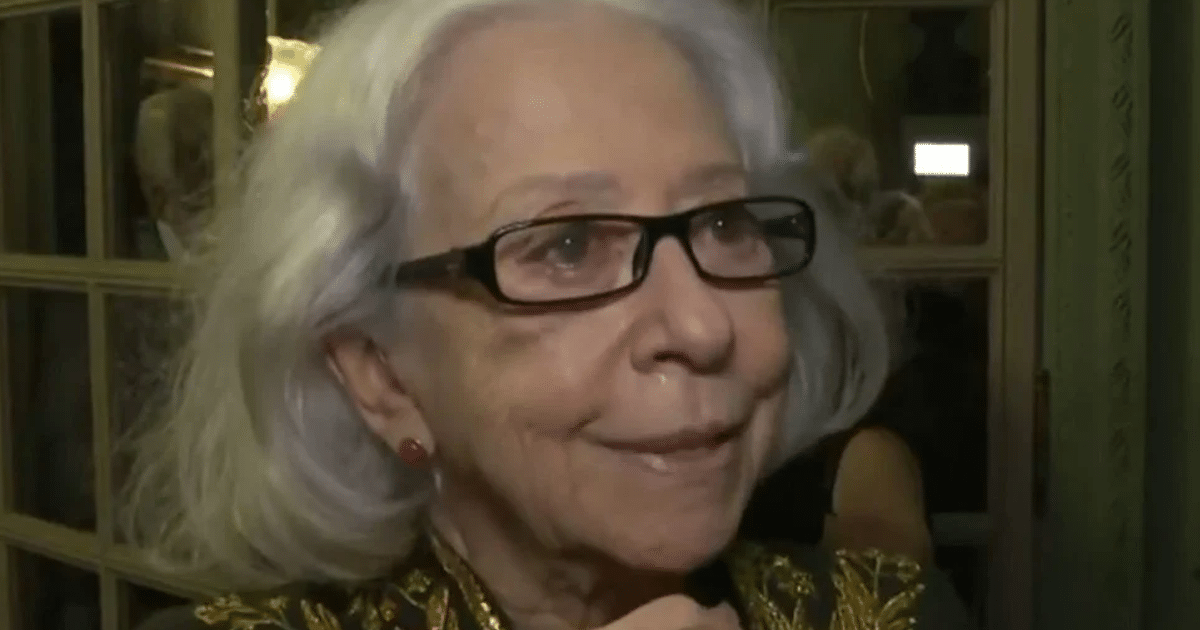
Desde 2022, o INSS assumiu a responsabilidade pela prova de vida, adotando um sistema de cruzamento de dados para verificar a vivacidade dos beneficiários. Isso inclui o uso de informações biométricas e registros de atividades governamentais do indivíduo. Essas medidas visam reduzir a necessidade de deslocamento dos beneficiários, facilitando o processo para todos os envolvidos.
Manter os dados atualizados junto à base de cadastro do INSS é crucial para evitar transtornos semelhantes ao enfrentado por Fernanda Montenegro. A atualização pode ser feita diretamente pelo aplicativo Meu INSS ou pelo site oficial, garantindo que benefícios como aposentadorias e pensões sejam mantidos sem interrupções.
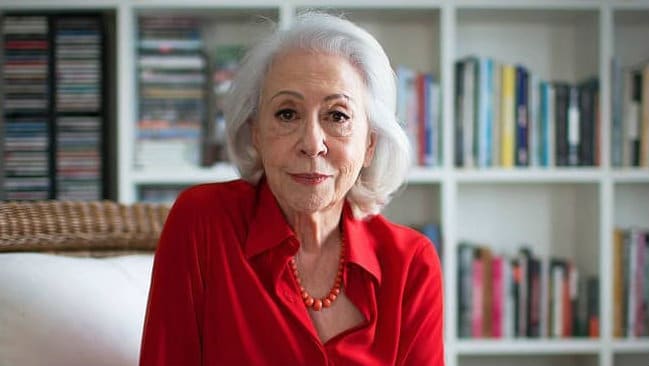
O caso de Fernanda Montenegro ressalta a importância de estar atento aos procedimentos de segurança social, como a realização da prova de vida, e a necessidade de manter os dados atualizados junto ao INSS. Essas medidas são essenciais para garantir a continuidade dos benefícios previdenciários e evitar possíveis fraudes que possam afetar a vida financeira dos aposentados e pensionistas brasileiros.
The post Saiba os motivos pelos quais o INSS cortou a aposentadoria de Fernanda Montenegro appeared first on CONTI outra.
É preciso um pouco de arrogância para mexer com um dos eventos televisivos que definiram o século XX. A Xógun original, uma minissérie em cinco episódios baseada no best-seller de James Clavell, foi um grande sucesso quando foi ao ar na ABC em 1980.
Quase um terço dos lares americanos sintonizaram para assistir a um elenco estelar liderado por Richard Chamberlain e o icônico ator japonês Toshiro Mifune em uma trama que reconta a história das aventuras de um navegador inglês no Japão feudal. Xógun quebrou barreiras na TV e acumulou prêmios. Poderia haver algum motivo, além da sede da indústria do entretenimento por trazer de volta prudutos já testados anteriormente, para revisitar essa história em 2024?
A resposta é sim. A nova versão de Xógun, que estreou no Brasil em 27 de fevereiro com o título “Xógun: A Gloriosa Saga do Japão”, não é propriamente um remake, mas sim uma reimaginação radical da história. Adaptado diretamente do romance de Clavell, este extenso drama histórico em 10 episódios tem uma visão muito mais ampla do que sua antecessora, indo além da perspectiva do estrangeiro ocidental para examinar uma sociedade fraturada que está tão perplexa com os modos deste intruso quanto ele com os deles. É um épico de guerra, amor, fé, honra, conflito cultural e intriga política. E em um momento em que muitas das maiores produções da TV oscilam entre altos e baixos, Xógun da FX se destaca como uma verdadeira obra-prima.
A trama de Xógun, DISPONÍVEL NO STAR, tem início no ano de 1600, quando um navio europeu em ruínas emerge da neblina da madrugada na costa de uma vila de pescadores japonesa. Liderando sua tripulação desgrenhada e desnutrida está John Blackthorne (Cosmo Jarvis, de Persuasão), um piloto inglês com um instinto de sobrevivência irreprimível. Infelizmente para ele, os líderes locais não estão exatamente satisfeitos em receber a sua delegação imunda. Ainda mais hostis à tripulação de protestantes que desembaraca no Japão são os católicos portugueses que já haviam estabelecido comércio e igrejas no país.

Blackthorne logo se depara com uma crise muito maior que a sua. Um ano após a morte de Taikō – título que signigica regente aposentado -, um Conselho de Regentes foi estabelecido para governar o Japão até que o filho do falecido líder tenha idade suficiente para ocupar seu lugar. Um desses regentes é Lord Yoshii Toranaga (interporetado Hiroyuki Sanada), um velho herói de guerra baseado em Edo. Este desentendeu-se com os outros quatro regentes, que se viram intimidados pelo seu crescente poder e independência. Convocado a Osaka, Toranaga é ameaçado de impeachment. A sua reação poderá mergulhar a nação numa guerra civil.
Estrategista brilhante, Toranaga sabe o quão útil um navio contendo 500 mosquetes e 20 canhões – bem como um “bárbaro” que sabe como usá-los – poderia ser para ele em uma terra onde as guerras são geralmente travadas por samurais empunhando espadas. Assim, Blackthorne, rebatizado de Anjin (a palavra japonesa para piloto ), é transportado para Osaka, onde seu destino e o do regente em apuros se entrelaçam. Toranaga convoca Toda Mariko (Anna Sawai), uma nobre que se converteu ao cristianismo, como tradutora do Anjin. A primeira vez que vemos essa personagem astuta, firme, estóica, mas com o coração partido, ela está calmamente persuadindo uma jovem mãe a entregar seu bebê para ser massacrado como parte do seppuku – um ritual em que um samurai tira a própria vida – de seu marido em desgraça.
Blackthorne pode ser o personagem que os espectadores encontrarão primeiro, assim como foi na Xógun original. No entanto, nesta narrativa dos co-criadores Justin Marks (Top Gun: Maverick) e Rachel Kondo, os personagens de Toranaga e Mariko são tão protagonistas quanto o homem que eles chamam de Anjin. Os três têm algo em comum: cada um é um leitor experiente de situações sociais, envolvido numa luta pela sobrevivência. Blackthorne deve navegar por uma cultura desconhecida, com costumes complexos, se quiser ver sua tripulação, seu navio ou sua terra natal novamente. Toranaga, que insiste que não tem ambições de se tornar shogun, será morto e seu clã dizimado no campo de batalha se ele não abordar seu conflito com o Conselho corretamente. Mariko, esposa de um guerreiro brutal (Shinnosuke Abe) e filha de uma família desonrada, sente-se chamada a cometer o seppuku, mas obriga-se a continuar a viver em deferência às suas crenças católicas e por lealdade a Toranaga.

Crucial para esta ampliação do escopo é a decisão dos criadores da série de não apenas fazer com que os personagens japoneses – que compõem a grande maioria do elenco – falem sua própria língua, mas também de traduzir suas palavras para o público ocidental usando legendas. Toshiro Mifune também falava japonês na versão de 1980, mas, como Blackthorne, o público que não conhecia esse idioma só conseguia entender o que ele dizia nas cenas em que o Anjin se comunicava por meio de um tradutor. Essa presunção manteve os espectadores fundamentados, mas também confinados, ao ponto de vista confuso do piloto, mantendo à distância os personagens japoneses e a sociedade em que habitavam.
Em 2024, quando o público da TV é internacional e as séries multilíngues são cada vez mais comuns, as legendas por si só são suficientes para justificar o remake. Toranaga, Mariko e seus compatriotas não são mais excluídos por padrão; nós os ouvimos maravilhar-se abertamente com os modos estranhos do Anjin, seu apetite por ensopado de coelho e sua aversão a banhos. Em termos de narrativa, a capacidade dos espectadores de entender o que os personagens japoneses estão dizendo uns aos outros abre imensamente o mundo de Xógun. Temos conversas privadas, histórias de fundo, acesso à vida interior de agentes duplos, cortesãs ambiciosas e guerreiros ávidos para provar seu valor através do combate. A perspectiva expandida torna a série uma saga verdadeira e envolvente, complementando performances que se movem fluidamente entre a sutileza e a grandeza, encenadas em meio a visuais suntuosos que contrastam vistas costeiras dramáticas e interiores minimalistas iluminados por fogueiras com a violência da guerra e do seppuku.
Em resumo, a minissérie “Xógun: A Gloriosa Saga do Japão”, disponível no Brasil nos streamings Disney+ e Star+ , prova que é possível contar uma história épica e grandiosa na televisão com a mesma qualidade que seria vista em uma produção de cinema.
TRAILER ABAIXO
The post A nova minissérie épica que está arrebatando a audiência e já é apontada como a melhor da década appeared first on CONTI outra.
A advogada e jornalista Alejandra Rodríguez fez história no último domingo (21/4) ao vencer o Miss Universo Buenos Aires 2024, aos 60 anos de idade. Agora, ela se prepara para um novo desafio e, quem sabe, mais uma conquista histórica; ela irá participar da etapa nacional do concurso Miss Argentina. Se vencer a competição, poderá concorrer ao título de Miss Universo.
Alejandra conta que o incentivo da diretora do Miss Universo Buenos Aires foi crucial na sua decisão de partciipar da competição. “Foi uma decisão bastante pensada, mas, graças à diretora, decidi me inscrever aos 60 anos”, afirmou a argentina ao canal TN, na última terça-feira (23/4).

A Miss Universo Buenos Aires 2024 tem agora um longo caminho pela frente até o Miss Universo. Para chegar à competição, ela precisa vencer as 27 finalistas da etapa nacional do Miss Universo Argentina, que está previsto para acontecer em 25 de maio, em Buenos Aires.
Alejandra, que mora e trabalha na cidade de La Plata, afirma que esta foi a primeira vez que participou da competição regional. “Eu nunca havia me inscrito. Agora surgiu essa oportunidade e me pareceu um desafio, uma proposta muito interessante”.
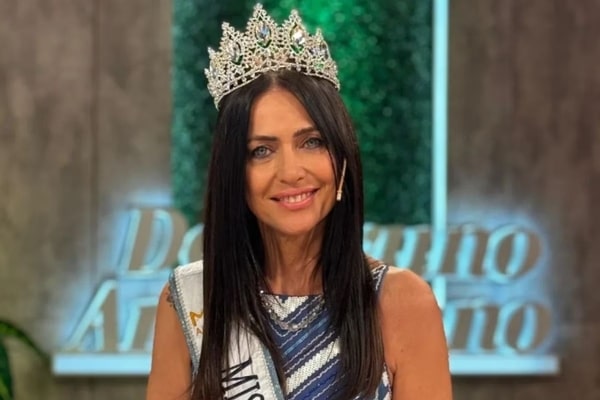
Esta também é a primeira vez que o Miss Universo Buenos Aires não impôs limite de idade às participantes. “A beleza não é apenas o físico, e sim tem a ver com a atitude perante a vida, que vai além da estética. Por isso, acho que o concurso veio para quebrar esses estereótipos”, pontuou Alejandra.
Muito elogiada por sua aparência jovial aos 60 anos de idade, Alejandra falaou sobre sua rotina de beleza ao jornal La Nación, nesta quinta-feira (25/4). A modelo contou que é adepta do jejum intermitente, ou seja, fica um período sem comer “para que o corpo se desintoxique”.
“Acho que isso ajuda muito. Depois como alimentos orgânicos, muita fruta e muita verdura. Eu uso bons cremes. Faço atividade física três vezes por semana. Gosto de caminhar e correr um pouco, mas não sou radical em termos físicos”, afirmou.

Alejandra também disse estar muito feliz por “representar um novo paradigma” nos concursos de beleza. “Estamos inaugurando uma nova etapa em que as mulheres não são apenas a beleza física, mas sim, outro conjunto de valores”.
The post Advogada de 60 anos vence concurso Miss Universo Buenos Aires 2024 appeared first on CONTI outra.
Whindersson Nunes demonstrou mais uma vez seu coração generoso ao promover uma emocionante iniciativa em prol da jovem Thayla Janis Carvalho Figueiredo, de apenas 9 anos, que recentemente alcançou os holofotes ao descobrir um asteroide. A notícia encantou o país, ressaltando não apenas a precocidade e o talento da garotinha, mas também a nobreza de gestos como o de Whindersson.
Thayla, natural do Piauí, revelou sua aptidão para a astronomia durante sua participação em um programa da NASA no ano passado, onde teve sua descoberta de um asteroide reconhecida pela renomada Agência Espacial Americana. Desde então, seu brilho só tem aumentado, com mais de 13 novas descobertas em seu currículo.
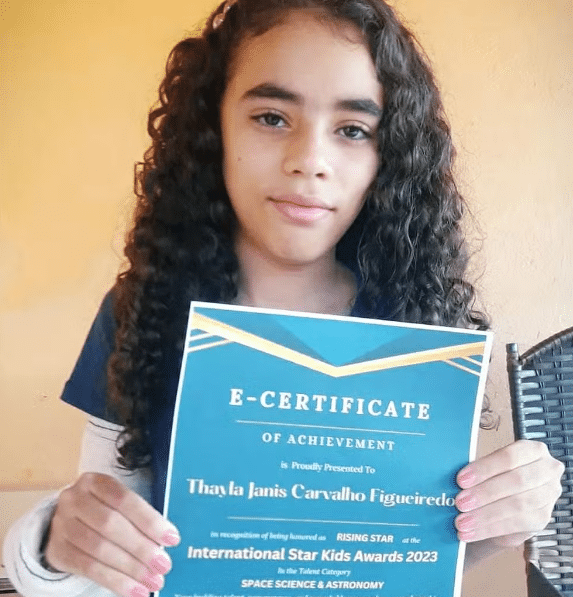
O humorista e empresário não só reconheceu o potencial de Thayla, mas também decidiu agir. “Para você estudar, fazer suas pesquisas e olhar para o céu como você gosta”, expressou Whindersson em uma postagem emocionante no Instagram, anunciando sua decisão de presentear a jovem com um telescópio.
Segundo o CRN, Whindersson também estendeu um convite especial a Thayla para testar um novo telescópio desenvolvido pela empresa da qual é sócio, a Tron Robótica Educativa. “A Tron Robótica Educativa estava projetando um telescópio simples de Busca Inteligente, queria que você fosse a primeira a testar na sede da Tron em Parnaíba”, revelou o influenciador.
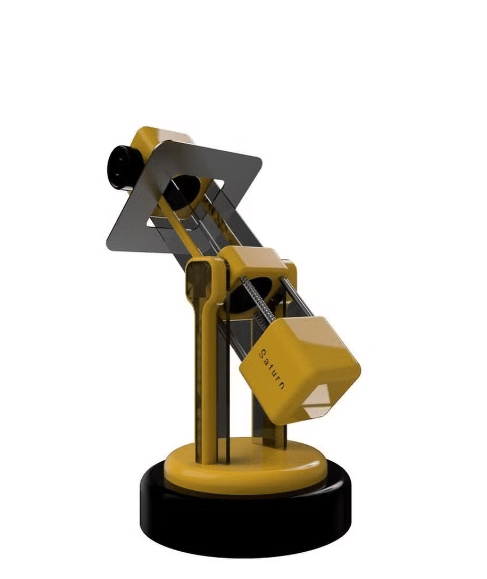
A homenagem não parou por aí. O telescópio, construído pela Tron, receberá o nome de “Saturn versão Janis 1”, em reconhecimento ao talento e à dedicação de Thayla à astronomia.
Emocionada com o gesto de apoio, Thayla expressou sua gratidão: “Agora eu vou poder observar o céu com minhas próprias pesquisas. Obrigado Whindersson Nunes e Tron, eu estou muito feliz”.
The post Whindersson Nunes doará telescópio para piauiense de 9 anos que descobriu asteroide appeared first on CONTI outra.
“Um Lugar Silencioso” é um thriller de terror dirigido por John Krasinski que mergulha os espectadores em um mundo pós-apocalíptico onde a sobrevivência depende do silêncio absoluto. Lançado em 2018, o filme conquistou aclamação da crítica e do público, destacando-se não apenas por sua originalidade, mas também pela sua execução habilidosa e pela tensão implacável que mantém do início ao fim.
A trama acompanha uma família lutando para sobreviver em um mundo onde criaturas misteriosas, cegas mas extremamente sensíveis ao som, caçam qualquer ruído para se alimentar. Em meio a esse cenário desolador, a família Abbott, liderada por Evelyn (interpretada por Emily Blunt) e Lee (interpretado por John Krasinski), tenta criar um ambiente seguro para seus filhos, Regan (Millicent Simmonds), Marcus (Noah Jupe) e um bebê recém-nascido. Comunicação é feita por meio de sinais e linguagem de sinais, evitando qualquer som que possa atrair as criaturas mortais.
O que torna “Um Lugar Silencioso” tão cativante é a sua capacidade de criar suspense a partir do silêncio. O filme utiliza o som de forma magistral, transformando cada rangido, suspiro ou gota d’água em potenciais ameaças iminentes. A tensão cresce a cada cena, à medida que os personagens enfrentam inúmeras adversidades para permanecerem vivos, incluindo o desafio de proteger um recém-nascido em um mundo onde chorar pode significar a morte.
Além da habilidade técnica, o filme também se destaca pelas performances convincentes do elenco. Emily Blunt entrega uma atuação emocionalmente poderosa como uma mãe determinada a proteger seus filhos a qualquer custo, enquanto John Krasinski traz uma presença tranquila, mas firme, como um pai que luta para manter sua família unida.
“Um Lugar Silencioso” é mais do que apenas um filme de terror; é uma reflexão sobre os laços familiares, a resiliência humana e a força do amor em face do desespero. Com uma atmosfera sufocante e reviravoltas emocionantes, este filme é uma experiência cinematográfica arrebatadora que permanece com o espectador muito depois que os créditos finais rolam.
The post Filme de suspense que foi sucesso absoluto de público e crítica está disponível na Netflix appeared first on CONTI outra.
No programa “Mais Você” desta quinta-feira (25), Ana Maria Braga conversou com o engenheiro João Fantazzini, tutor do cachorro Joca, que morreu no bagageiro de um avião da Gol. A apresentadora sem emocionou muito ao ler uma publicação que o dono do animal de estimação fez em homenagem ao cão, e foi aos prantos durante a entrevista com o tutor. “[O cachorro] faz parte da família, é filho, irmão, amigo, é tudo da gente”, declarou.
Joca, um cão da raça golden retriever, saiu do Aeroporto Internacional de Guarulhos (SP) e deveria ter sido transportado para Sinop, no interior do Mato Grosso. Devido a uma falha operacional da Gol, companhia que o levava, o cão foi parar em Fortaleza (CE) e, quando chegou ao seu destino original, foi encontrado sem vida.
O atestado de óbito aponta que o animal sofreu uma parada cardiorrespiratória. “É de cortar o coração”, afirmou Ana Maria ao noticiar o caso.
“O João está gentilmente com a gente agora de manhã, para falar com a gente”, apresentou ela, sem conseguir conter as lágrimas. “Todos nós que amamos os bichos, amamos a natureza, temos sensibilidade, a gente sabe o que significa a companhia de um amigo como aqueles que nos acompanham. Eu chamo de filho, né?”, ponderou.
Fantanazzi contou que estava com Joca havia cinco anos. “Eu falei que eu não ia chorar, porque já transcendeu do que eu tô sentindo. Sempre foi eu e ele. Eu comprei ele porque eu sempre fui sozinho, e eu sempre sonhava em ter um golden. Eu sabia que ele era carinhoso, companheiro, mas não sabia que eu ia ser presenteado por algo a mais. O Joca foi muito mais do que isso pra mim, muito mais”, disse o dono do animal, com lágrimas nos olhos.
Ana Maria também exibiu fotos do tutor com o cão Joca. “Quem não tem um bicho desse como filho tira fotos de tudo quanto é jeito, né? Faz parte da família mesmo. É filho, irmão, amigo. É tudo da gente”, afirmou. “Ele conseguia ser tudo”, confirmou o engenheiro civil.
“Eu entendo bem. E acho que, quem também gosta, tem cachorro, tem amor para os animais, entende perfeitamente seu sentimento. A angústia, a revolta”, comentou Ana Maria.
Segundo João, a Gol deu todo o suporte quando ele estava fechando o voo em que Joca seria transportado. “Me deu um aparato ali para eu conseguir fechar o contrato com eles. Falaram que me davam a opção de alugar a caixa de transporte, até porque a caixa deles é a melhor opção, que seria teoricamente segura, a melhor para a segurança dele. E eu acabei aceitando”, contou.
“Eles me induziram a comprar a passagem da Gol, porque sairia mais barato enviar o Joca se eu voasse pela Gol. Eu falei: ‘Ótimo, eu compro a passagem, eu vou pela Gol’. E ainda falaram ‘a gente coloca o Joca no mesmo voo que você, para quando você chegar em Sinop, você já conseguir pegar o Joca de primeira’. Mas não foi isso que aconteceu”, disse ele bastante emocionado.
A apresentadora ficou sem palavras e também não conseguiu segurar as lágrimas. “Eu deixei ele. No dia, eles pediram para chegar cinco horas antes do meu embarque. Eu fui, coloquei ele na caixa. Eles lacraram a caixa, e ele foi embora”, chorou o tutor.
Ana Maria perguntou se João chegou a verificar se havia uma identificação de lugar para o qual Joca estava voando na caixa. “Eu fui ver depois. Quando ele chegou, meu advogado viu que tinha etiqueta de Manaus, de vários lugares do Brasil. E tinham duas etiquetas, uma em cada lado da caixa, que estava escrito assim: ‘Esse é o cachorro Kiara’. Não era o nome do Joca na caixa”, explicou.
A veterana respirou fundo e ficou indignada. “Não tiveram o cuidado de etiquetar só com o animal que estava ali”, reclamou. “Não tinha que ter outras etiquetas. Era uma vida ali dentro, era o meu filho que estava ali dentro. Eu lembro que eu pedi pro cara, antes de ir embora, pra cuidar dele”, afirmou João.
De acordo com o engenheiro, Joca tinha um laudo veterinário para duas horas e meia de voo, mas foi submetido a 1.500 km a mais no trajeto, que durou quase quatro horas. João não teve a opção de ir até Fortaleza para buscar o cachorro, e a atendente da Gol o orientou a retornar para São Paulo, e o animal o encontraria lá.
“Eu perguntei se o Joca estava bem, ela falou que teve um problema. Eu perguntei só se ele estava bem, e ela falou: ‘Ele tá bem’. Ela me falou que houve um erro da Gol, que eles embarcaram o Joca em outro voo. Um voo para Fortaleza”, explicou.
“Ela não me deu a opção de ir para Fortaleza. Ela só falou: ‘A gente já está emitindo uma passagem para você agora. Você vai voltar para São Paulo no próximo voo, e o Joca vai esperar um voo de Fortaleza para São Paulo, e você encontra com ele em Guarulhos’. E eu ‘tá bom’, porque eu não sabia. Se eu imaginasse que poderia acontecer alguma coisa, eu teria pedido para ir para Fortaleza”, acrescentou.
“Eles lotaram meu WhatsApp de fotos dele na pista. Estavam jogando água dentro dele, porque nem abriram a caixinha. Ele tava na pista. Lá a sensação de sol estava em 32°C na hora, imagina na pista”, continuou. “Eles não se preocuparam nem de ter um veterinário, nenhum veterinário atestou se ele era apto a voltar”, lamentou.
A Gol divulgou uma nota oficial falando sobre a falha operacional, e João afirmou que não teve apoio da empresa. “A única coisa é que o presidente da Gol me ligou na hora pedindo desculpas. E eu falei: ‘Você não tem nada a ver com isso, quem matou meu cachorro foi seu operacional. Não tô nem aí se você é o presidente da Gol, o presidente de sei lá de onde'”, esbravejou.
“Nada vai trazer o Joca pra mim. Eles não me deram apoio nenhum. Eu velei o Joca e não teve apoio nenhum. O único apoio que eles tiveram foi dando lanchinho pra quem estava comigo na hora. O que mais me mata é que ele não deveria ter morrido daquele jeito”, finalizou ele, chorando.
***
Fonte: Notícias da TV.
The post Ana Maria Braga chora ao conversar com tutor de cachorro que morreu em avião da Gol appeared first on CONTI outra.